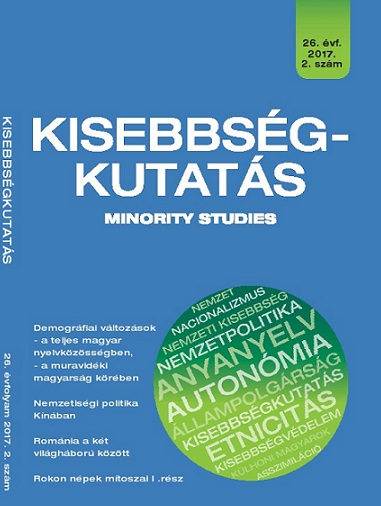
Nyelvi jogok Ausztriában – új várományosokkal a láthatáron
Hilpold, Peter: Sprachrechte in Österreich – Neue Herausforderungen vor dem Hintergrund der aktuellen Fluchtbewegungen. = Europa Ethnica. 2016. 3-4. No. 73-79. p.
More...We kindly inform you that, as long as the subject affiliation of our 300.000+ articles is in progress, you might get unsufficient or no results on your third level or second level search. In this case, please broaden your search criteria.

Hilpold, Peter: Sprachrechte in Österreich – Neue Herausforderungen vor dem Hintergrund der aktuellen Fluchtbewegungen. = Europa Ethnica. 2016. 3-4. No. 73-79. p.
More...
Dácz, Enikő: „Eine atypische Kirchengemeinde“. Die deutschsprachige Gemeinde der Kalvarienkirche in Sathmar. = Spiegelungen. Jg. 11. 2016. No. 2. 27-37. p.
More...
Magocsi, Paul Robert: Tradícia autonómie na Karpatskej Rusi .= Historický časopis. 65. r. 2017. 1. no. 79-97. p.
More...
Pirker, Jürgen: Fünf Jahre „Ortstafelregelung”, 40 Jahre Volksgruppengesetz. Bilanz und Persektiven für das Volksgruppenrecht. = Europa Ethnica. 2016. 3-4. No. 60-67. p.
More...
A többség kisebbsége. Tanulmányok a székelyföldi románság történetéből. Csíkszereda.1999.Pro Print Könyvkiadó. 311 p.
More...
Johannes Weidenheim: Pannon regény. Ford., utószó: Komáromi S. Bp. 2017.
More...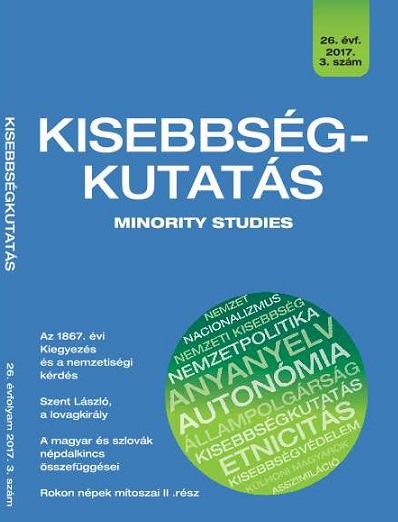
Hilpold, Peter: Die Südtiroler Ortsnamenregelung – ein rechtlich unlösbares Problem? = Europa Ethnica. Vol. 74. 2017. No. 1-2. 29-38. p.
More...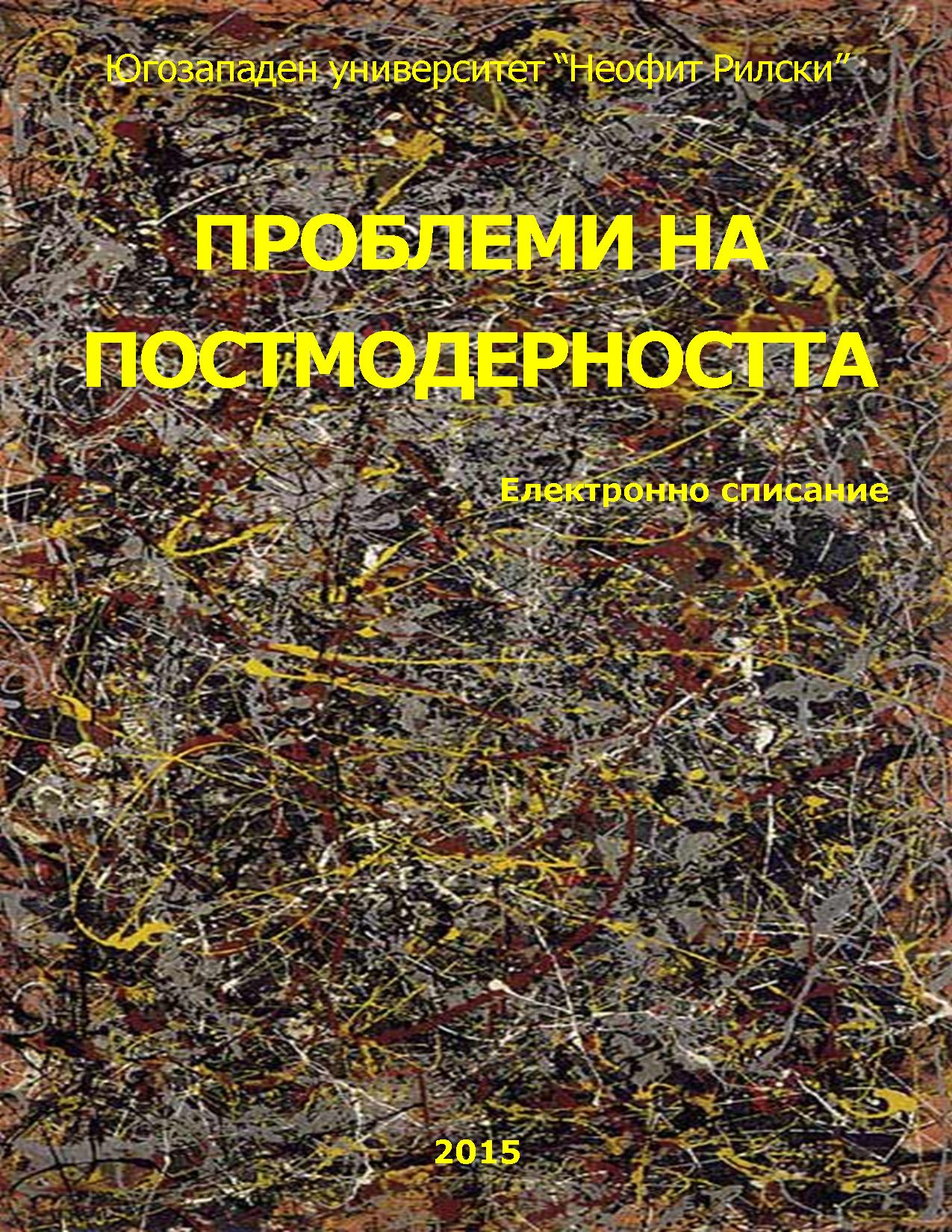
Purpose of this paper is a reflection on the role of the modern Bulgarian Diaspora to strengthen the image of Bulgaria and the Republic of Moldova in the world. An important factor in the perception and the formation of the international image of the country is its Diaspora. Diaspora organizations with their activities and lifestyle represent an image of their historic homeland, the features of the national character of societies, citizens who they have become. Spreading and promoting national culture and values, lobbying for national projects and programs, with the help of the media, the Internet and social networks, they actively intervene in the processes of interstate and global communication in the world space.
More...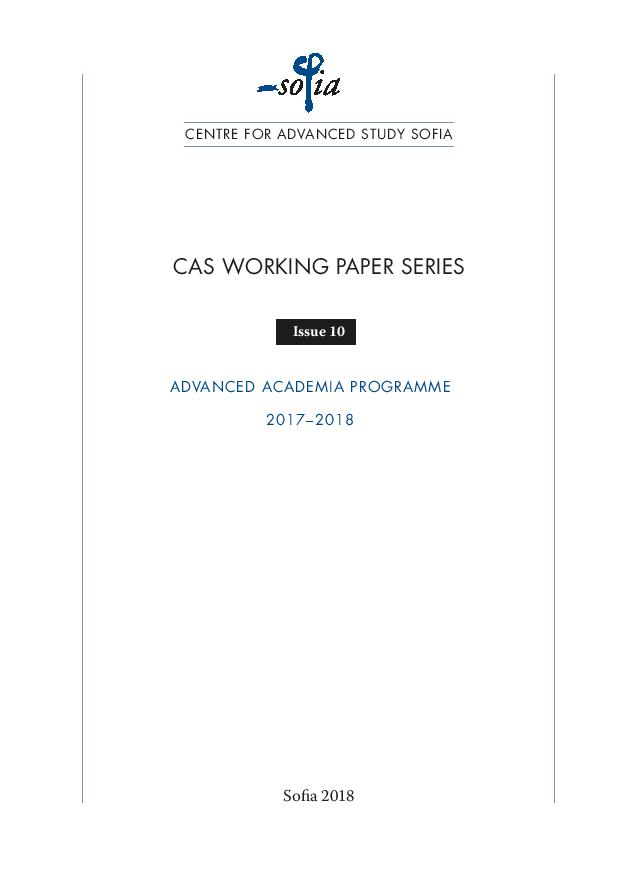
In this paper, I examine the understanding of Roma integration which, although not explicitly articulated in the official documents of Bulgarian state institutions, nonetheless implicitly informs the “politics of Roma integration” declared in these documents. The goal of the analysis is to outline a fundamental problem that largely condemns to failure the “national politics of Roma integration”, whose objectives have been consistently reconfirmed over the years. First, I formulate the problem with the situation of the Roma minority in Bulgaria and, in this connection, my understanding of “national/ethnic” minority as a social construction and a contemporary political concept. Next, I offer a review and critical analysis of the documents which state “the national policies of Roma integration in Bulgarian society”. In the last part I focus on the policy of so-called “educational integration of children and students from ethnic minorities” in an attempt to show how the understanding of “integration of Roma in Bulgarian society” condemns integration policies to failure.
More...
Based on empirical evidence and document analysis, this paper aims to provide a better understanding and comparison of the differences in the spatial marginalization of Roma in Bulgaria and Hungary. The paper explores the differences between the ghetto, the ethnic neighbourhood, and the deprived neighbourhood, and their combinations and intersections, which enables us to understand the features and mechanism of spatial marginalization of Roma in Bulgaria and Hungary. It also discusses the policy measures on improving the housing situation of Roma during state socialism, the lack of such measures after the transition, and its changing spatial consequences in the two countries. Special attention is paid to the processes of displacement and the growth of informal housing after the transition in both countries, as a result of which the historically different spatial segregation patterns of Roma in Bulgaria and Hungary have been converted along similar lines.
More...
Findings from our pilot research project which focused on providing car sharing services to young people with different ethnic/racial background showed discrimination against certain ethnic groups. The research was based on a controlled field experimental design to examine the chances of rides being offered to racially different testers. The experimental variables were both race and gender. Creating altogether 8 profiles enabled us to test the interaction between these two experimental stimulus. The small-scale research (total N=160) was implemented in Hungary, in summer 2017 by interns of TÁRKI, Hungarian Social Research Centre. The forthcoming article shows evidence of ethnic/racial disproportionality in offering ride to the different testers by multi-ethnic drivers. High effect size was detected in case of Arabic male tester (d=.87, p=.009) and medium effect in case of the Chinese male tester (d=.62, p=.059). In case of the Russian male profile and female testers of any nationality we did not detect evidence of racial or ethnic discrimination compared to our Dutch benchmark profile, however it has to be noted, that the numbers of observations were very low (N=20 for each profile) in our field experiment. Although the pattern is not clear, interaction effect was shown between gender and nationality; as a consequence of this interaction, the Arabic male tester had far lesser chance of being offered a ride compared to any other combination of gender and nationality.
More...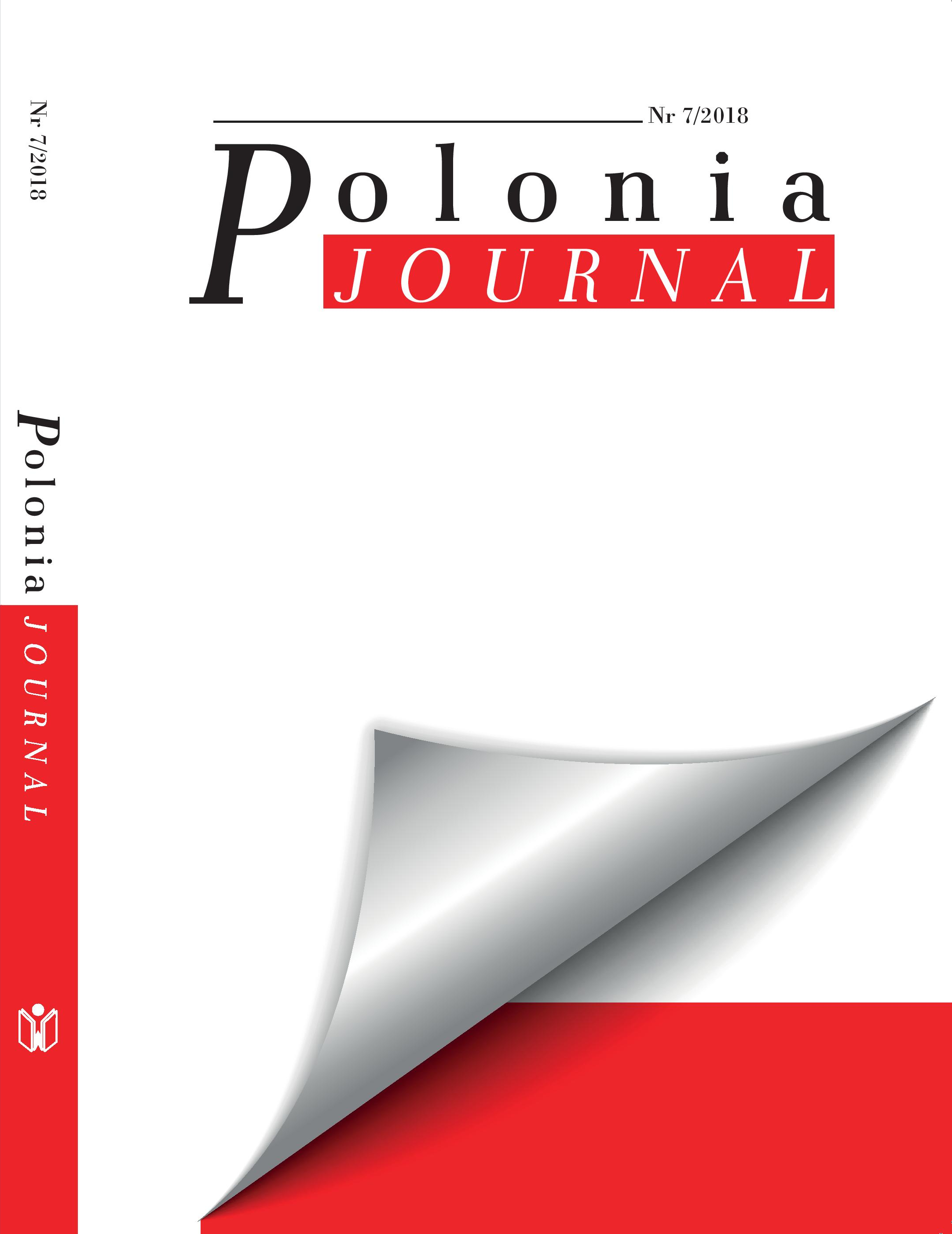
The author considers the question of Polish people, particularly of what possibilities they have to develop their ethnic identity in Czech Republic. The author analyses the factors enabling them to cultivate Polish culture, traditions, customs, folklore and language properly in Polish community, which represents ethnic minority in Czech Republic.
More...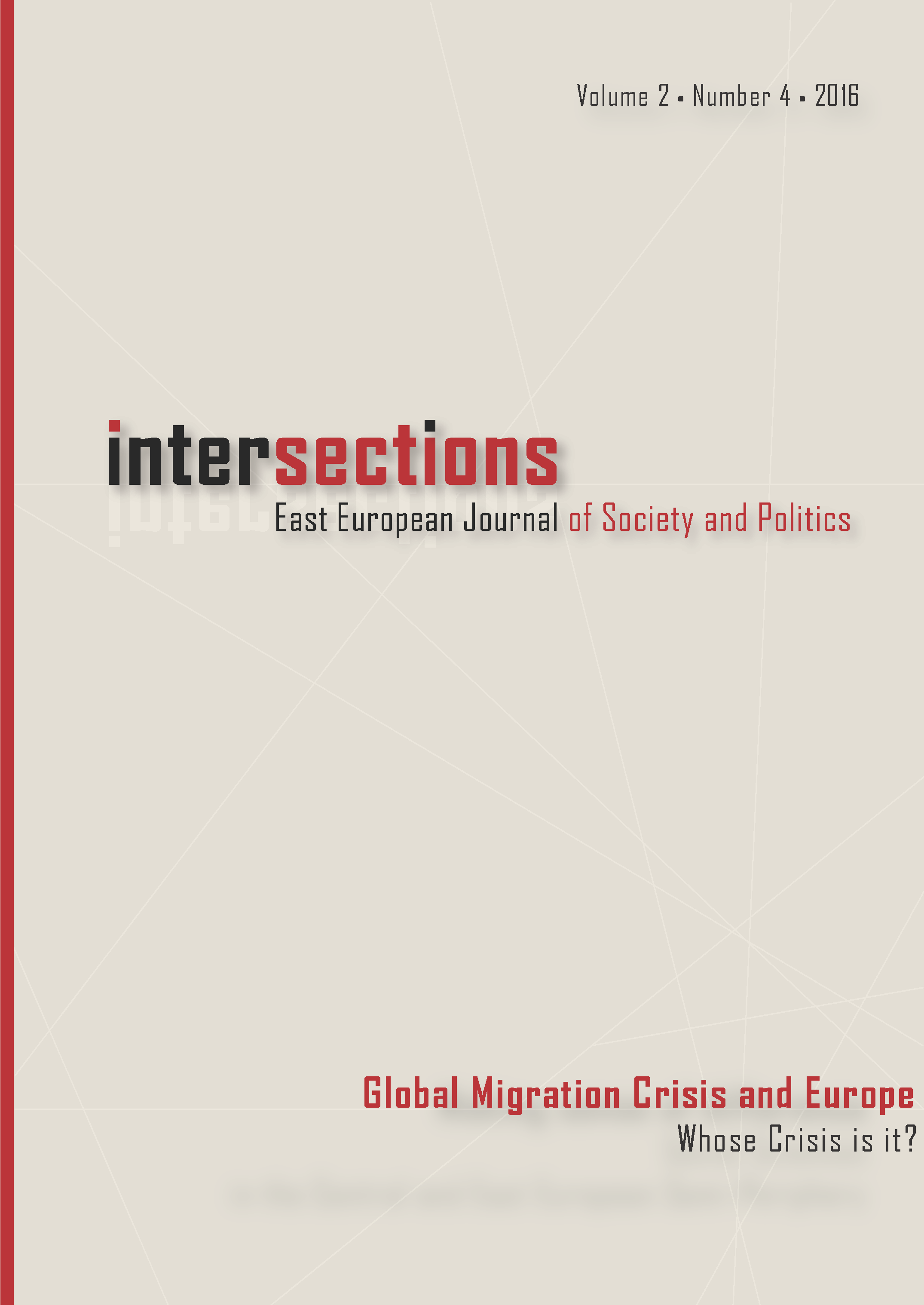
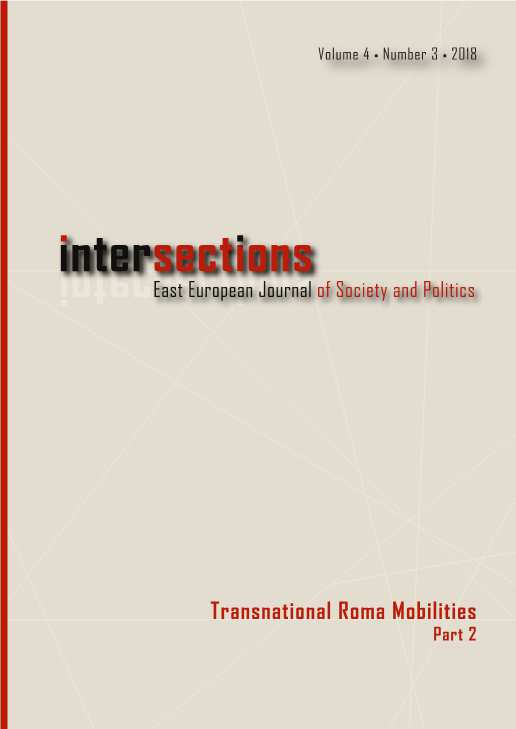
The aim of our article is to inquire into the interconnectedness of local social context, mobility processes and social transformations. We argue that migratory patterns of the local Roma population in ethnically mixed communities are shaped by the degree and modes of maintenance of social distance between the Roma and local majority. While social distance can shape the ways migrant networks develop, it also influences the way remittances are invested at home. The analysis focuses on the comparison of two rural communities from Transylvania where we carried out community studies and a household survey which also included attitude questions related to ethnic groups. Our study revealed that the most visible aspect of the local separation is the housing segregation. While this is present in both cases, in one of the villages Roma use their upward mobility to challenge social segregation and to reduce physical distance (i.e. moving inside the village). Here in spite of physical closeness social distance between the majority and Roma remains high. In the other locality the importance of social ties increase during migration and social distance is reduced, while the ethnic groups maintain their relative residential separation.
More...
Roma migration from Eastern countries has been one of the main topics of public debate in Italy in the last decade. Roma people have been depicted as the biggest threat to citizens’ safety, especially in the biggest cities, and have become the target of special securitarian measures that revive old stereotypes. At the same time, thanks to various European bodies, Roma people have also became the targets of ad hoc inclusionary policies, such as the National Strategy for Inclusion. The deconstruction of the camp system for nomads was one of the basic targets of all the interventions. This article describes what happened to Roma migrants during the last ten years – from the ‘Nomad Emergency’ of 2007 until the present-day dismantling of the nomad camp system. It focuses on Roma migrants who live in the two Italian cities where most of the Romanian Roma have settled since the beginning of the 21st century: Milan and Rome. The paper analyzes the public policies that were implemented by national and local authorities, and highlights some of the strategies that Roma migrants use to cope with the dismantling of the nomad camp system.
More...
Ethnographic studies have hitherto focused on relationships among mobile actors, groups and how inter-ethnic relations are shaped by technologies and online information exchanges. However, little research has included the effects of virtual networks in relation to intra-ethnic structures. Facebook, as a media environment, facilitates ‘doing family’ across distance within transnational families. These routines shape intergroup solidarity through geographic distance by transmitting a selection of inter-ethnic references. What causes people to avoid inter-ethnic references on their Facebook timelines that are controversial, through self-censorship? And what are the social impacts of those choices – if any? How do these transnational socialisation practices ensure solidarity among Roma across borders? These are the questions answered in this paper based on offline and online ethnography of Roma migrant communities. The paper claims that although many coping strategies were learned from other ethnic minorities in the UK, stereotyped messages transmitted a selective narrative about other ethnic groups back to the participants’ countries of origin to uphold ethnicity-based social assurances explained as instruments of ethnic solidarity. In short, the potential liberating power of virtual transnationalism was rather limited, while its potential to help reproduce social asymmetries was more apparent.
More...


The article can be included in the contemporary debate about the role that transnational migrations play in modifying the European social order. There is general agreement about the fact that, in the modern-day global framework, while transnational migration can improve the living conditions of some, they can also make things worse for others and can contribute to creating new forms of inequality rather than curtailing old ones. Scholars agree that international migration can lead to profound social changes through social remittances or cultural mobilities, but they are skeptical about the possibility of considerable re-stratification both in receiving and origin countries. The article therefore investigates changes in status within some Romanian Roma migrant networks in Italy based on a set of qualitative and ethnographic data compiled during the European project The Immigration of Romanian Roma to Western Europe: Causes, Effects and Future Engagement Strategies – MigRom. This article demonstrates how Romanian Roma migration is only able to produce status changes in migration partially, and highlights how these changes are the result of a diverse combination of factors, such as Roma migrants' motivation, ambition, and opportunities, but above all migration policies and anti-Gypsyism in the origin and receiving countries.
More...
During the last 20 years, processes of social, spatial or economic exclusion suffered by a growing number of people identified as ʻRomaʼ in Europe were progressively investigated and better documented, as, for instance, legal (or para-legal) measures implemented against Roma migrants living in precarious settlements in Western Europe. Over the same period, international or European institutions, national authorities and many NGOs significantly developed local or regional initiatives for ʻRoma inclusionʼ. From ethnographic investigations conducted during several years in two French cities which have implemented social support and housing projects toward Roma immigrants families (Bulgarian in one case, Romanian in the other), this article firstly aims to highlight the effects of the contradictions and paradoxes characterizing the launch and running of many ʻinclusion policiesʼ which, like exclusion policies, are frequently based on stereotypical conceptions of ʻRomaʼ as well as of ʻsocial integrationʼ. Reversing the point of view, we will secondly light the way the ʻtarget familiesʼ of these projects may nevertheless succeed to preserve leeway and to develop different forms of local insertion, using (or not) resources provided by public policies as well as personal and family resources. In so doing, this paper proposes to address the role and value of informality and ʻproductive misunderstandingsʼ in these dynamics of emancipation and effective integration taking place in a strongly binding context.
More...